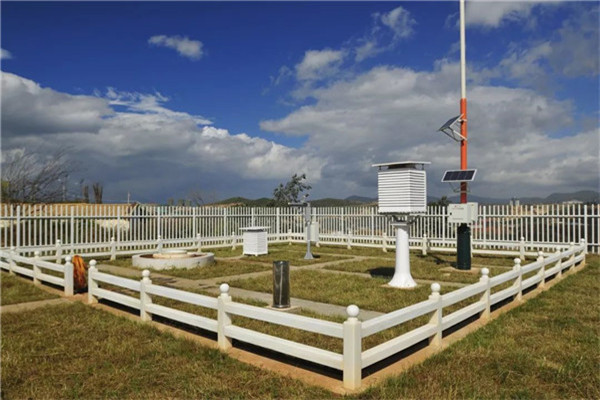Wind direction sensor in weather monitoring

In meteorology, the direction of the wind is the direction of the wind. The horizontal distance the air moves per unit time is the speed of the wind. In the history of Our country, people began to monitor wind speed and direction very early, such as the wind tongbird invented by Zhang Heng in the Eastern Han Dynasty, which can not only measure wind direction, but also observe larger wind; So, with the development of science and technology, the wind speed and direction are monitored in real time by monitoring instrument.
The device can measure the direction of the wind is a wind sensor.
What are the commonly used wind direction sensors in meteorological monitoring?
- Electromagnetic wind direction monitor: the use of electromagnetic principle design. Due to the principle of more types, so the structure is different. Some of these sensors have begun to use gyroscope chip or electronic compass as the basic components.
- Photoelectric wind direction monitor: this kind of wind direction sensor uses absolute gray code plate as the basic component, and uses a special custom coding, to photoelectric signal conversion principle, can accurately output the corresponding wind direction information.
- Resistance wind direction monitor: The wind direction sensor is similar to the slide rheostat structure, will produce the resistance value of the maximum and the minimum standard into with 0 ° 360 °, respectively. Then, When the vane produce rotation, the slider sliding rheostat turn together with the top of the indicator, and different voltage change Angle or direction of the wind direction can be calculated.
Wind speed sensor is a direct wind measurement equipment.
Commonly used wind speed monitor are:
- Rotating wind cup type wind speed sensor: it has three or four conical or hemispherical empty cups, according to the speed of the wind cup (the number of revolutions per second) can determine the size of the wind speed. It uses the wind to blow the wind cup formed by the principle of different speed design, because of the use of mechanical structure, so this sensor body is extremely strong.
- Fan type sensor: it uses the same principle as the wind cup type sensor, but because of the vertical fixed fuselage design, most fan type wind speed sensor does not have the ability to complete the measurement work under the condition of wind direction change.
- Hot air wind speed sensor: the principle of thermistor design. Because of the difference in working mode. This sensor is constant temperature wind speed sensor and constant current sensor.
In addition, wind direction and wind speed sensors are easy to use, good performance, high reliability of intelligent instruments. Therefore, with the development of sensor technology, researchers have developed an ultrasonic sensor that can measure both wind speed and wind direction by using the principle of ultrasound.
Application:
Jxbs-3001-fs series wind direction sensor is small and light in appearance, easy to carry and assemble.
The three-cup design concept can effectively obtain external environment information. The shell’s shape is high quality aluminum alloy. So, the exterior can electroplate and spray with plastic, which has good anti-corrosion and anti-erosion characteristics.
In addition, It can ensure the instrument long-term use of rust – free cut phenomenon. At the same time with the internal smooth bearing system, to ensure the accuracy of information collection.
So, greenhouse, environmental protection, weather station, ship, dock, aquaculture and other environment wind direction measurement need it.
Features:
1.Small size, light weight, easy to carry and assemble in the field.
2.The system adopts low power consumption, environmental protection and energy saving design and digital processing technology, high detection accuracy.
3.Wide range and good stability.
4.High linearity of data information display, long signal transmission distance, strong ability to resist external interference.
5.Reasonable structure design, accurate positioning.
Installation method:
Flange installation, threaded flange connection to the wind direction sensor lower pipe firmly fixed on the flange plate.
Four φ 6mm mounting holes cut on the circumference of the chassis, and they fix to the support using bolts.
Otherwise, keep the whole set of instruments in the best levelness to ensure the accuracy of wind direction data. So, JXCT connection is easy to use and can withstand large pressure.
Wind speed and direction transmitter is a wind speed and direction monitor based on the principle of ultrasonic research and development. The ultrasonic probe of the equipment adopts the top inverted design, so that they can circulate and receive ultrasonic in the two-dimensional plane, and is not affected by the interference of wind, sand, rain and snow. Through the concentrator, the data will be uploaded to the monitoring center or cloud platform in 4G/GPRS communication mode for users to view.
Resistive wind direction transmitter and three-cup wind speed transmitter are mechanical structure design. There are rotating parts, the monitoring needs to start at low wind speed. If the wind speed is lower than the starting value. Compared with the ultrasonic wind speed and wind direction transmitter, the biggest characteristic is that it has no starting wind speed limit, can work under the condition of zero wind speed, and can obtain wind speed and wind direction at the same time, and output.
At present, the wind speed and direction monitoring instrument, mainly mechanical and ultrasonic. Although the two have advantages, disadvantages, they can carry out rapid and accurate measurement. So in the purchase of products, can be combined with the specific use of the site and requirements to choose.
please also read http://infopostings.com/




